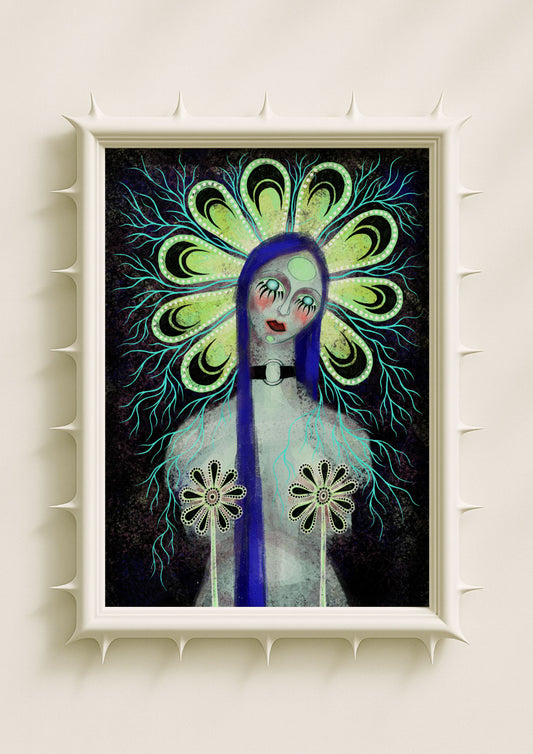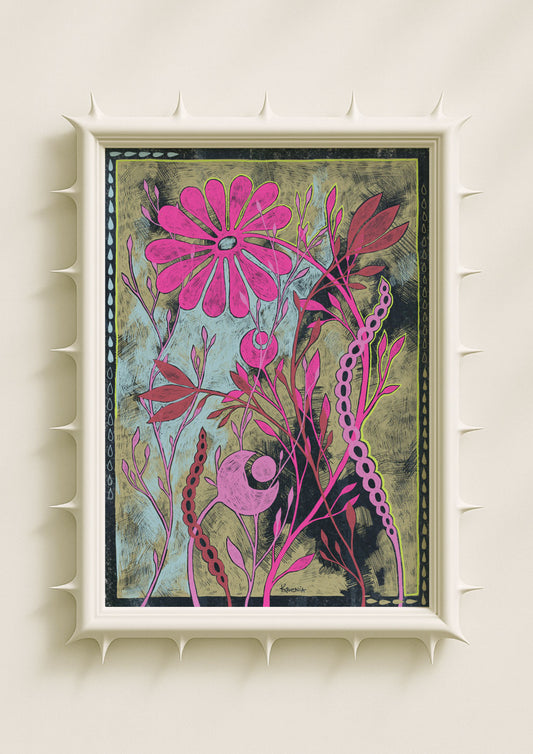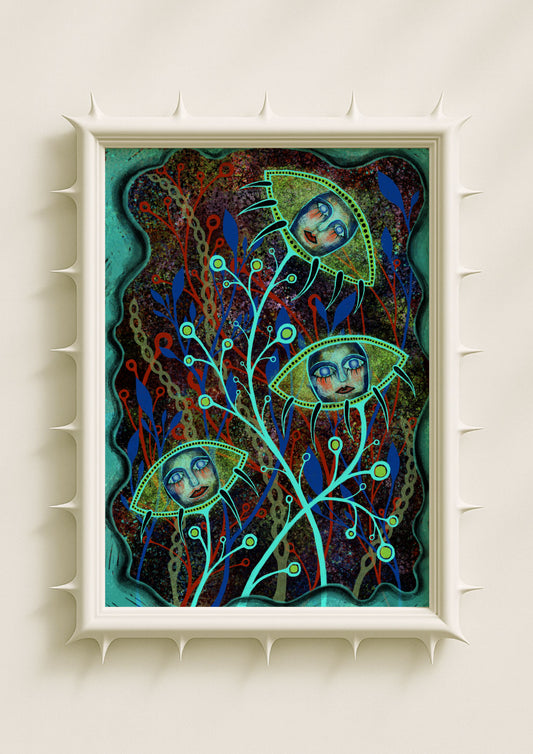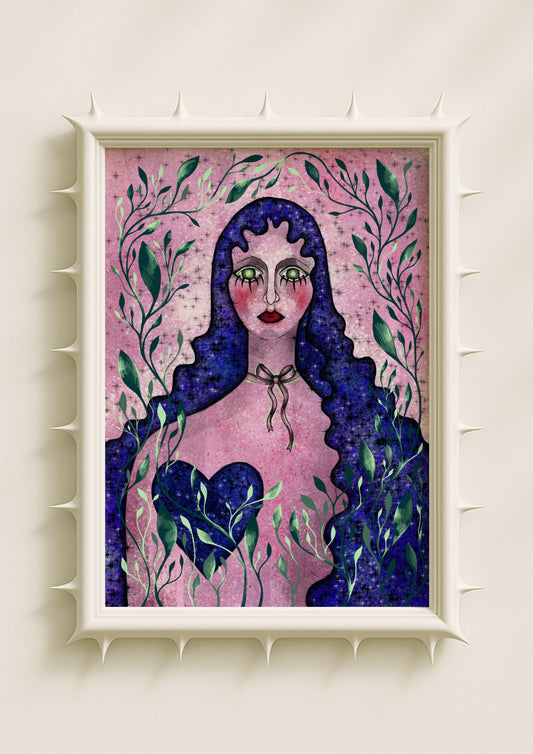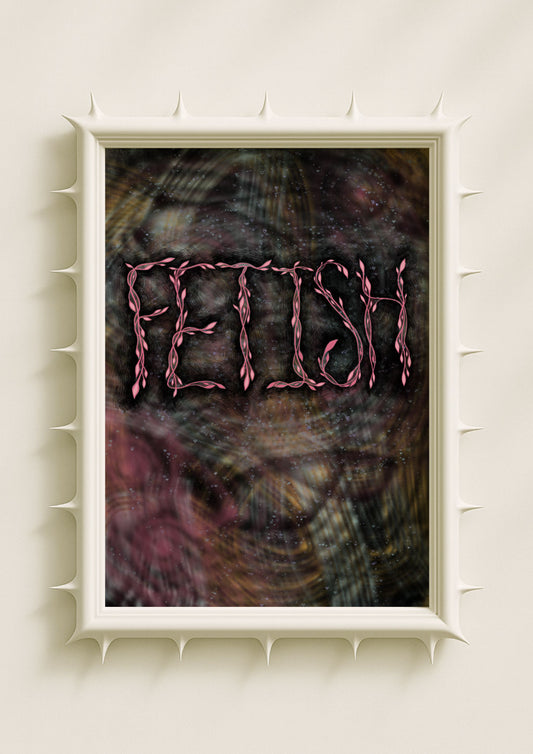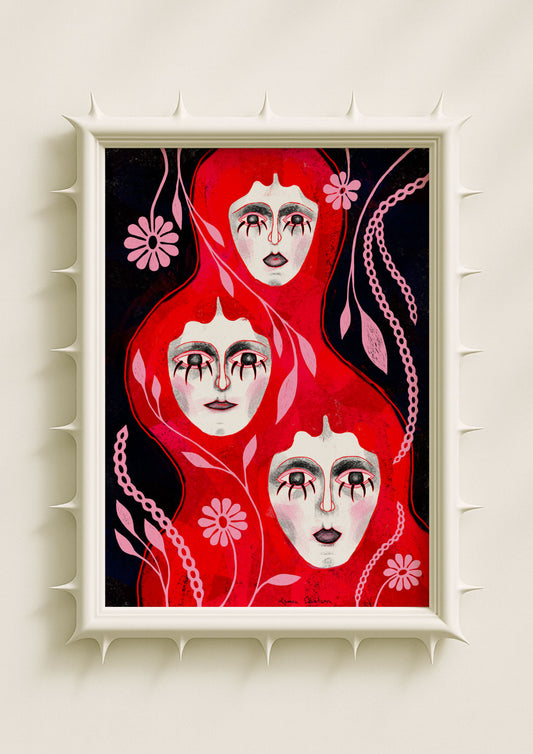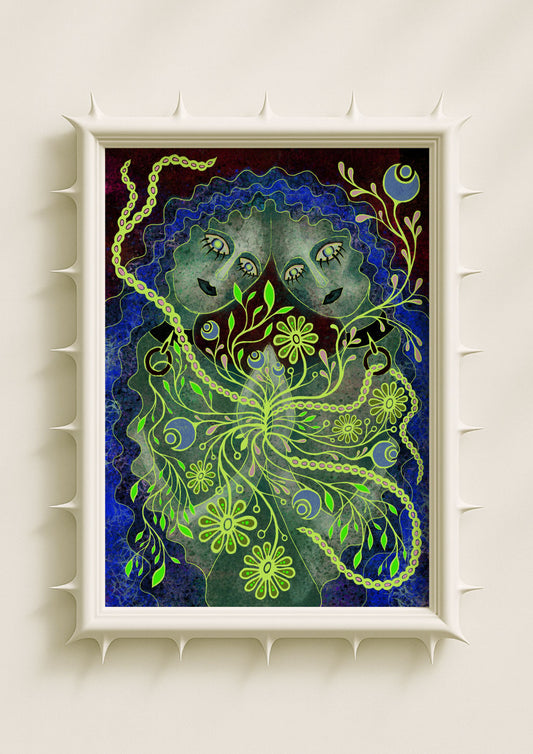Why My Backgrounds Never Aim for Realism
The backgrounds in my artwork are never meant to represent real space. They don’t mimic skies, interiors, or landscapes. Instead, they operate as emotional environments — fields of texture, stain, and noise that shape the mood of the figure. These surfaces look worn, fractured, weathered, or stained because emotion itself is rarely clean. I want the background to carry psychological weight, functioning as a living atmosphere rather than a passive setting.

Stains as Emotional Shadows
I often begin my backgrounds with irregular stains: cloudy patches, diffuse marks, uneven washes of colour. These stains create a sense of depth without using traditional shading. They act like emotional shadows — soft areas that feel like memories, melancholic fog, or residues of inner tension. Stains allow the background to breathe. They create an atmospheric instability that gently frames the figure and gives the entire artwork a sense of psychological movement.
Cracks as Visual Tension and History
The fine cracks seen in many of my pieces are deliberate. They give the surface a feeling of history, as if the image existed on something fragile — ceramic, plaster, or an old wall. Cracks introduce tension: the sense that the world behind the figure is strained, unstable, or holding something beneath the surface. They also add contrast to the smoothness of the face or the botanical forms. The fractured texture becomes a counterpoint to the softness, intensifying the emotional mood.
Noise as Breathing Space
Noise — small speckles, grainy dots, digital grit — gives the background its pulse. It prevents empty areas from feeling flat or lifeless. Noise adds what I think of as “visual air,” a subtle vibration that keeps the eye engaged. When noise surrounds a saturated figure or a bright botanical form, it amplifies their luminosity, making them appear to glow from within even though no actual glow effect is used. Noise creates a soft flicker that feels alive, like static in a dream.

Combining Multiple Textures to Build Depth
Depth in my artwork often comes from layering several of these elements: stains that create soft patches, cracks that add tension, and noise that makes the surface tremble. When these textures overlap, they form a complex background that feels dimensional without any traditional perspective. The viewer senses depth emotionally, not mathematically. The background becomes a psychological space rather than a physical one — a room made of feeling rather than architecture.
How Texture Shapes the Atmosphere Around the Figure
The figure in my artwork is never separate from the background. The textures around them shape their emotional presence. A cracked surface may make the character appear fragile or ancient. A stained halo may give the impression of mood or transformation. A field of noise may create a sense of isolation, silence, or internal pressure. The interaction between the figure and the background creates a dialogue — an emotional ecosystem that holds the entire composition together.

Why “Unnatural” Backgrounds Feel More Alive
A smooth, realistic background would make the image feel static. By embracing stains, cracks, and noise, the artwork gains movement and tension. The surface becomes unpredictable, textured, and emotionally charged. It feels like something is happening behind the figure — something unspoken, unresolved, or quietly alive.
These backgrounds aren’t landscapes. They’re inner worlds. And they allow the emotional narrative of the artwork to breathe, expand, and resonate on a deeper level.
